Imagine the following…
You’re in your pajamas and you just wrote some copy before taking a lunch break.
You work from home making a great living and don’t have to go to a boring cubicle all day.
That can be a reality with remote copywriting jobs.
More and more people are working from home these days and it’s becoming the norm for companies to be completely remote.
That means there are more remote careers available than ever!
In fact, 85% of remote workers chose to do so because it offers a more free and flexible lifestyle.
Many people imagine that you have to be a business owner to work from home and live that king of lifestyle, but it’s not true.
If you ever dreamt about working from home and not having to wear a stupid suit while at an office all day, keep reading.
Because today I’m going to show you how to land the copywriting career of your dreams in a few simple steps.
What are copywriting jobs?
Copywriting is the skill of writing business material like advertisements, articles, whitepapers, case studies, and other pieces of content.
Normally sales copy is written to generate sales or leads for a company.
A copywriter holds a lot of responsibility for the success of projects and campaigns, so it can be a stressful but extremely fun career.
The daily tasks of a copywriter include:
- Writing, editing, and revising sales copy.
- Working with other departments to produce more accurate copy and learn more about upcoming products, promotions, etc.
- Testing headlines, calls to action, and other elements.
- Collecting resources like market reports, testimonials, memos, and other documents to study.
- Interviewing industry figures for quotes or to learn more about a particular market.
- Source or create graphics, images, and illustrations. They may work with a design team within the company they’re working for during this process.
- Promoting and distributing copy.
- Measure copywriting campaigns to ensure they are reaching KPIs.
Depending on the exact position and projects you’ll work on, copywriters will also require the following skills:
- Understanding fundamental copywriting strategies that entice action and emotional responses.
- Search engine optimization which is normally used for blog posts, web pages, and similar digital content.
- Social media marketing in cases where you will need to promote the content you produce for a company.
- Email marketing for producing newsletters and sending them out if required.
- Conversion rate optimization which helps you write copy that generates better results.
- Time management and organization to hit deadlines and keep a consistent workflow.
- Communication to keep team members and employers up to date on progress.
If you believe you’d make a great copywriter, keep reading because I’m going to cover how to get copywriting jobs from home next!
How to get remote copywriting jobs
These are effective approaches for landing copywriting jobs.
I’ve used them myself in the past and I know mountains of writers that make a great living using these strategies.
1. Check out all of the major job boards and filter by remote positions
All of the regular job boards you can visit for careers have freelance, contact, and remote filters that will help you find work-at-home positions.
Let’s look at Indeed as an example. Click the “Upload your resume” button to sign up for an account.
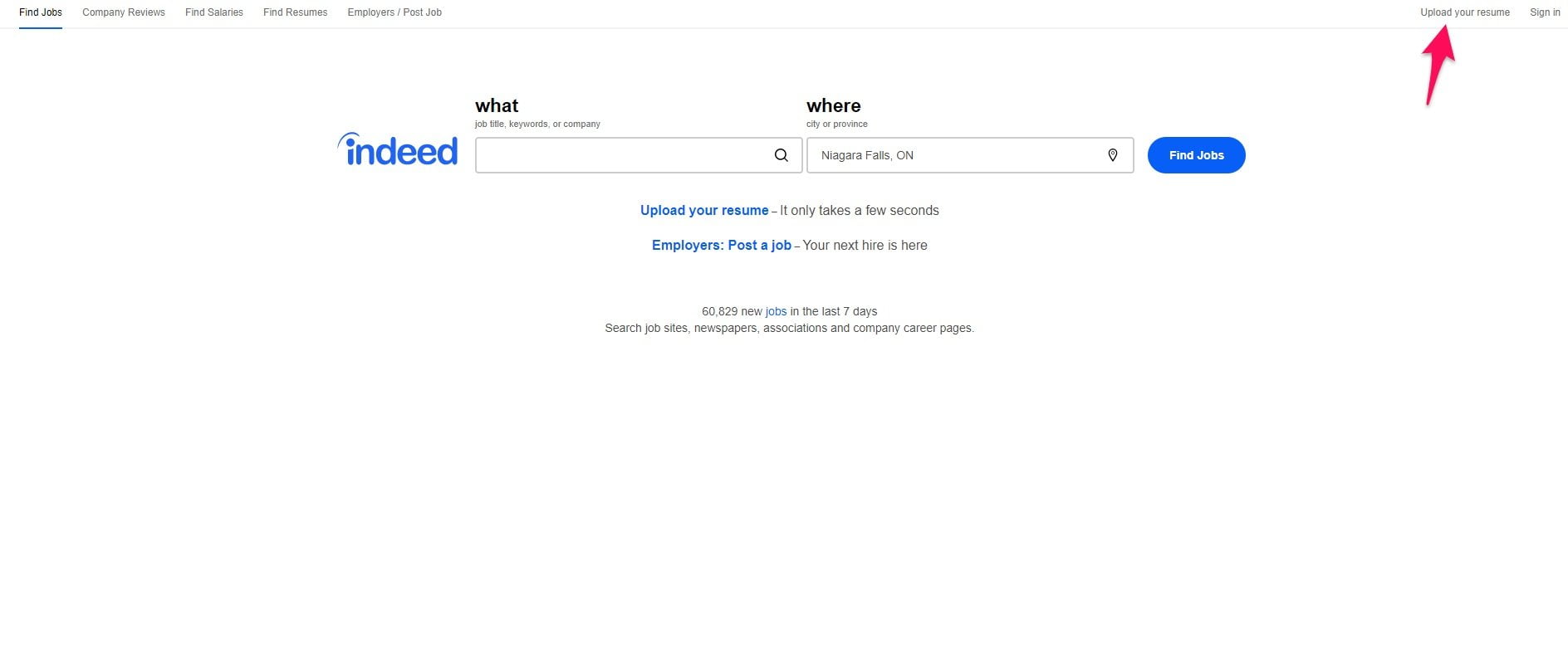
Enter a keyword like “copywriter” into the search field along with your location after you’ve registered to find writing jobs.
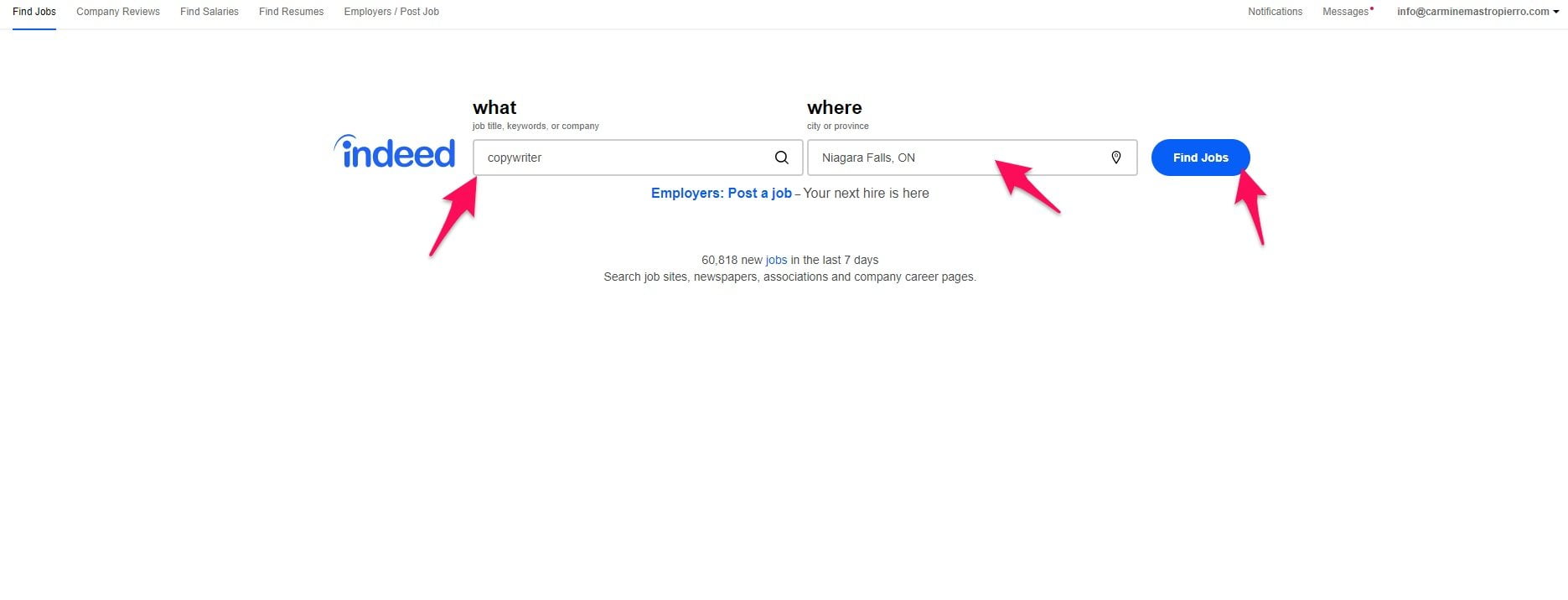
You can then choose between various filters on the left sidebar like “Freelance.”
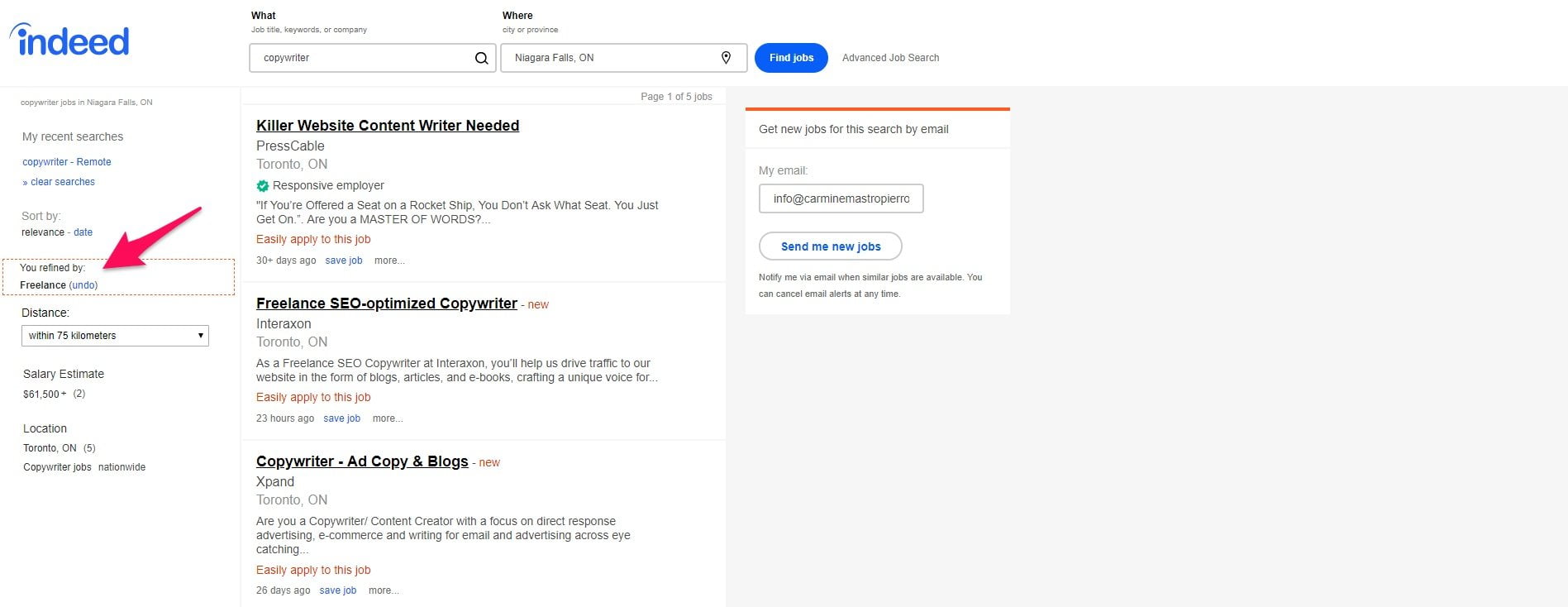
Typically freelance and contract jobs will have remote working conditions or they can be requested.
Additionally, some job boards will literally have a remote filter to find you copywriting positions that can be done from anywhere in the world or country.
Your resume plays a HUGE role in whether or not you’ll be considered which is why I recommend using a free tool like VisualCV to build a professional resume in minutes.
Register for an account by clicking the signup button on the top right.
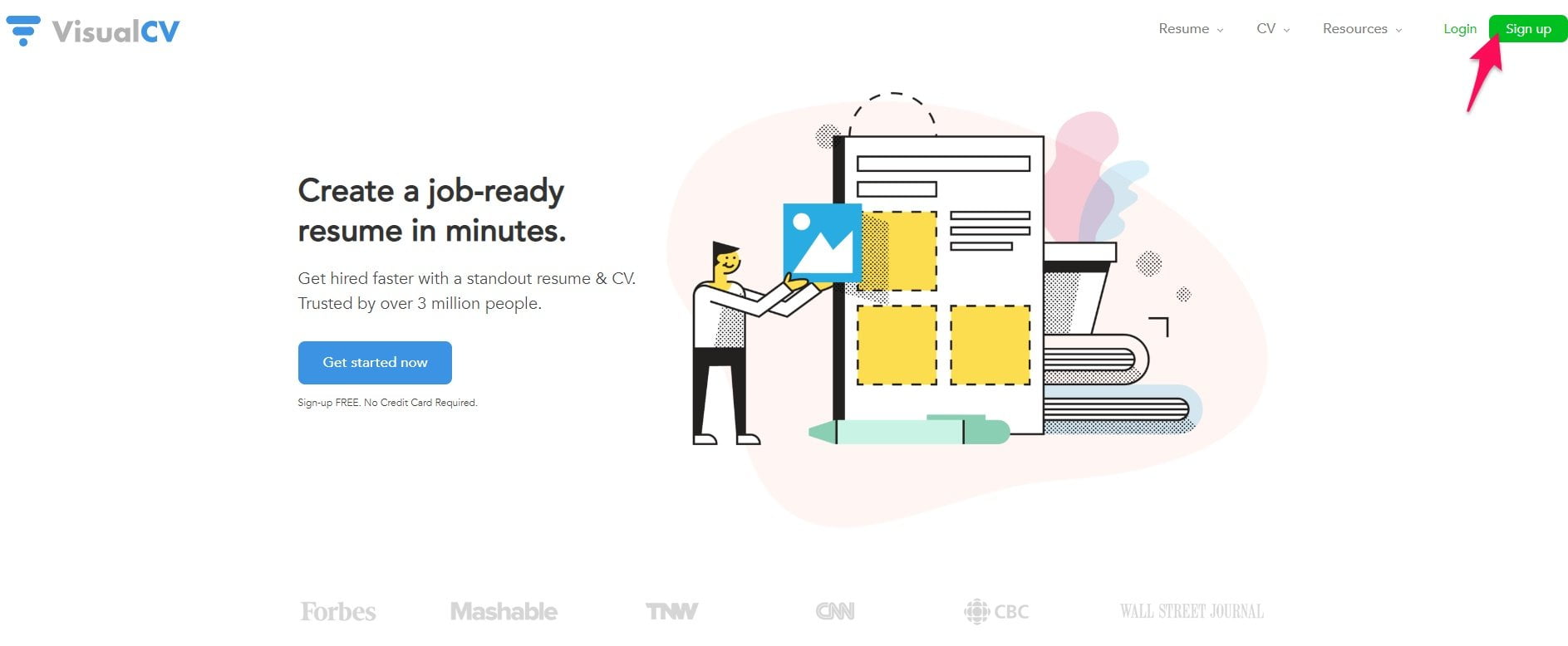
Click the “CV/Resume” option on your dashboard to begin creating a professional resume.
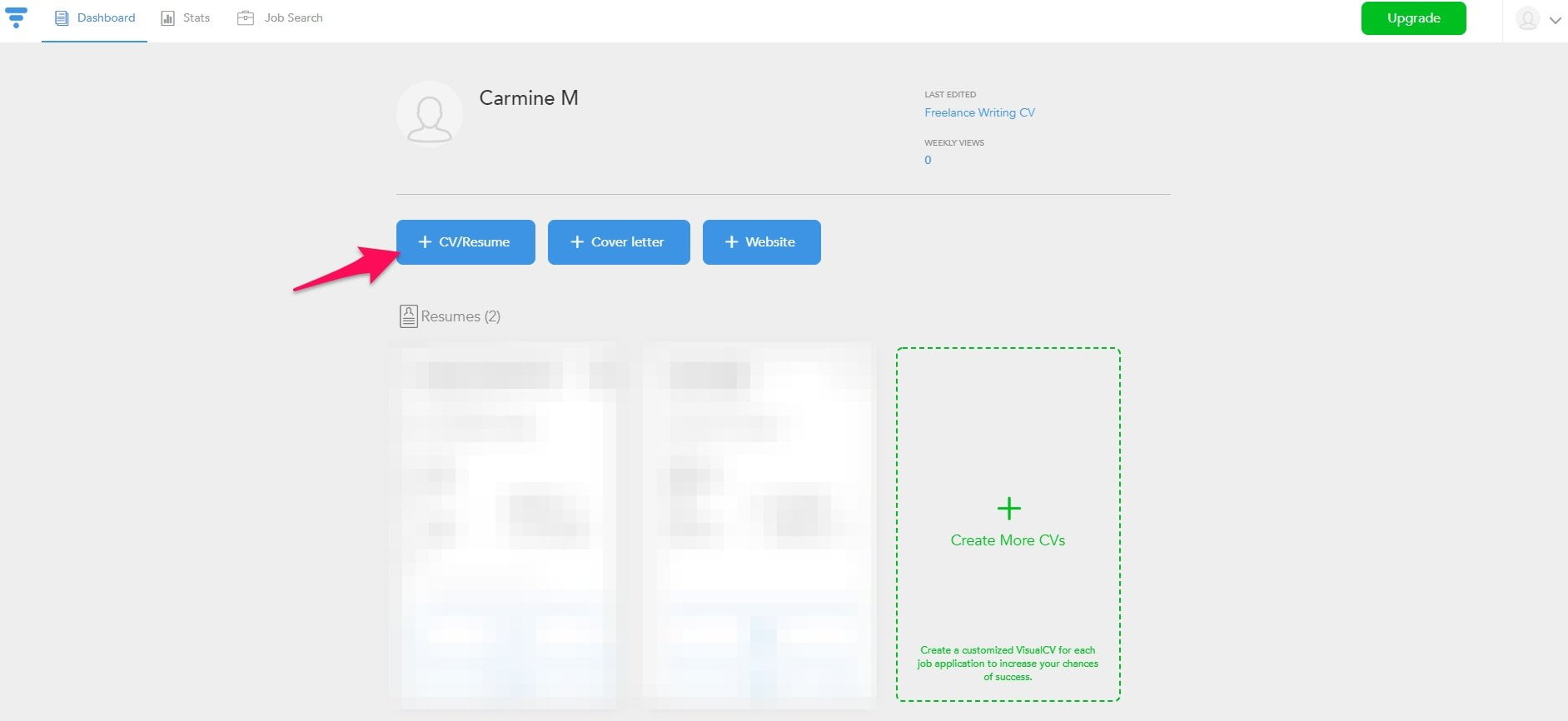
Choose between one of their free templates on the following popup.
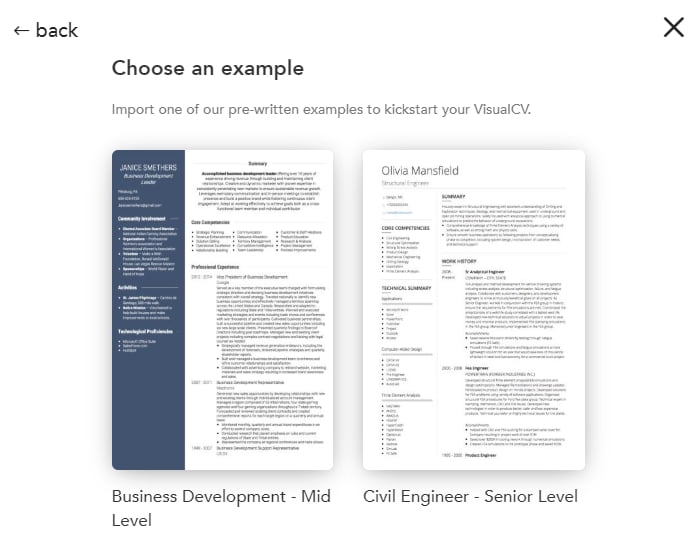
You can then customize the resume with text, images, and other elements.
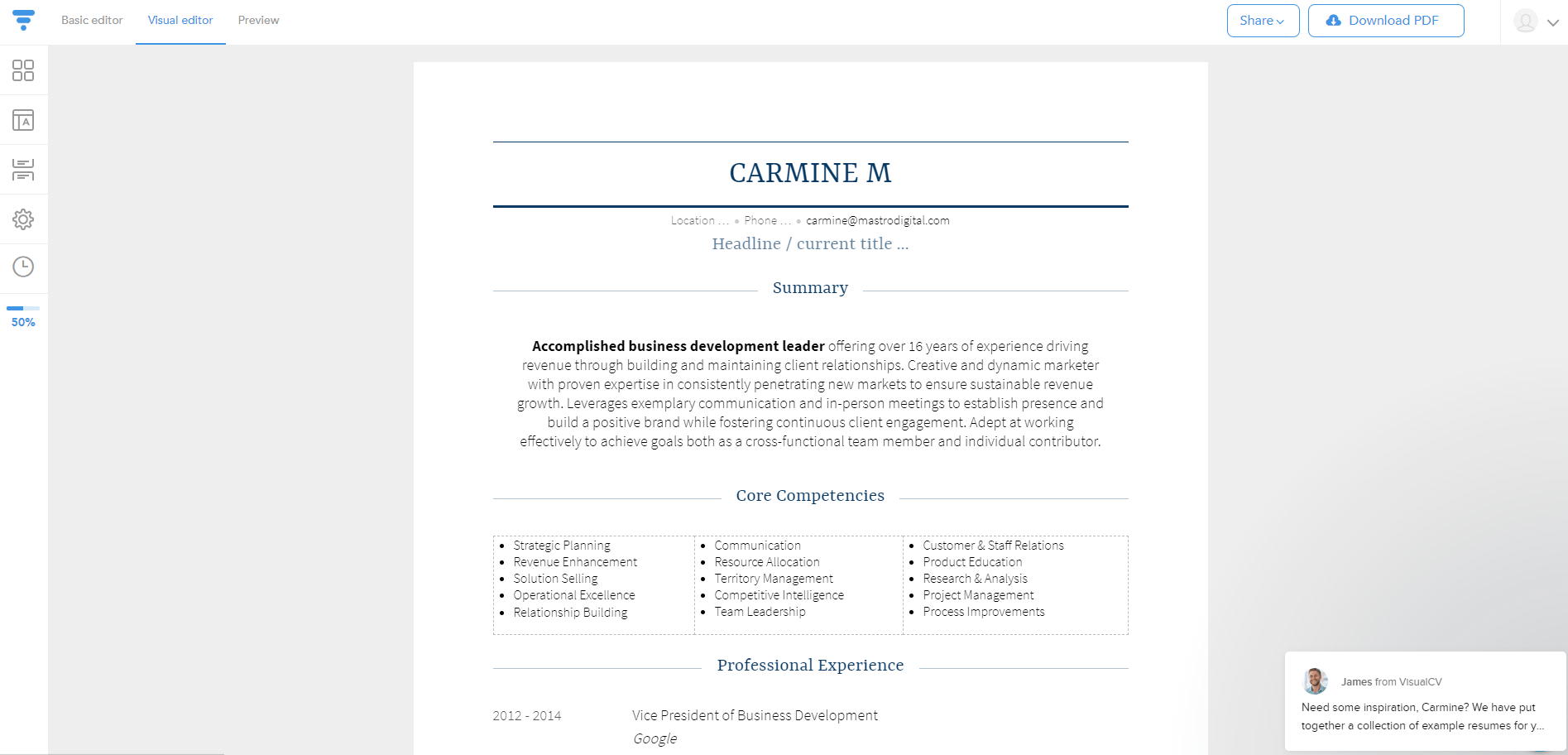
This will be useful not only for writing job boards but what I’m going to show you next, too.
2. Apply for copywriting jobs on Angel List
Angel List is a startup database that’s amazing for both lead generation and finding remote work.
I’ve got heaps of clients by pitching the companies on Angel List and proposing that I offer them my services instead of taking on a full-time position.
However, they have an entire section of their platform dedicated to available jobs in these startups.
First, make sure you’ve signed up for a free account from the homepage before clicking the “Jobs” page.
Then, enter a keyword like “copywriting” or “writing” and choose the remote filter.
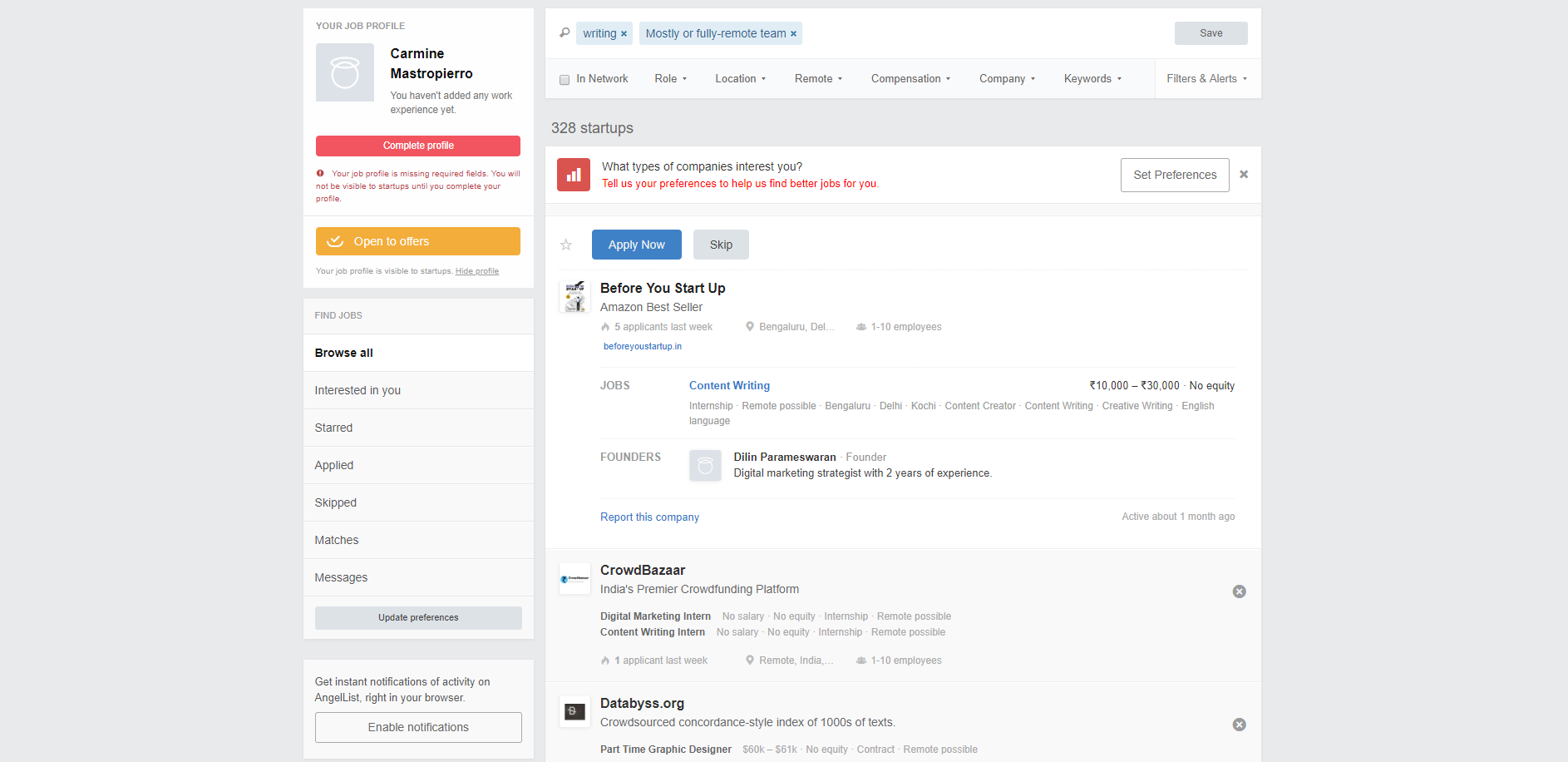
Click the blue “Apply Now” button and it will open a popup box where you can enter a message and apply for the position.
Ensure that you’ve polished off your profile with experience and the resume you made earlier to make any company itch to work with you.
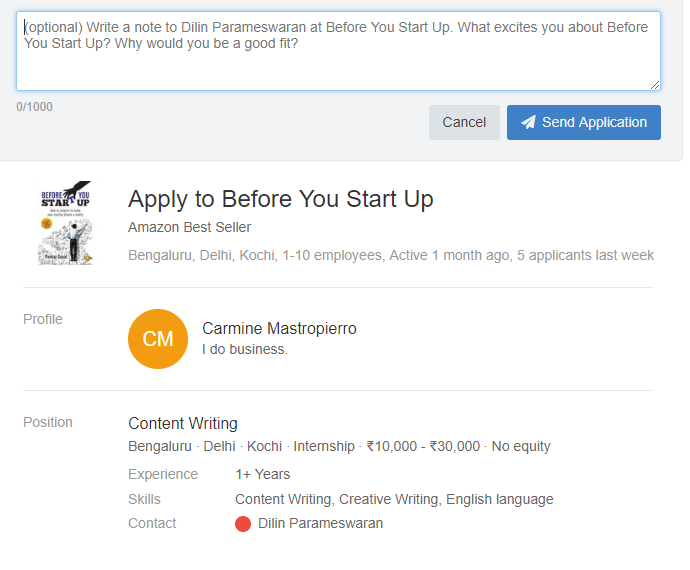
3. Start blogging and creating a name for yourself
I’ve been offered nearly a dozen full time copywriting positions without applying for any jobs in the past year.
The highest paying position started at $70,000 salary!
Do you know how I did it?
Blogging.
Yep, you read that right.
While I work for myself and offer content writing services to my clients, I get the occasional job offer from companies that want to hire me full time.
I really appreciate the offer, but it’s not what I’m interested in.
However, I know that a lot of you writers reading this article today are.
Creating a blog allows you to show off your writing skills, display a portfolio, and puts you on the map compared to other writers that are more invisible on the internet than a ghost.
The key is to blog about topics that will bring the correct audience to your website, as well.
That’s why my blog mostly touches on content marketing, copywriting, related subjects like SEO.
It’s also a big reason why relevant high paying leads reach out to me on a regular basis.
But don’t take my word for it. Listen to this interview with six figure copywriters Aaron Orendorff and Jacob McMillen on building a freelance copywriting career through blogging.
4. See what LinkedIn has to offer
LinkedIn is a fantastic platform for finding copywriting jobs.
You can see what opportunities are available by navigating to the jobs page and entering a search term related to writing.
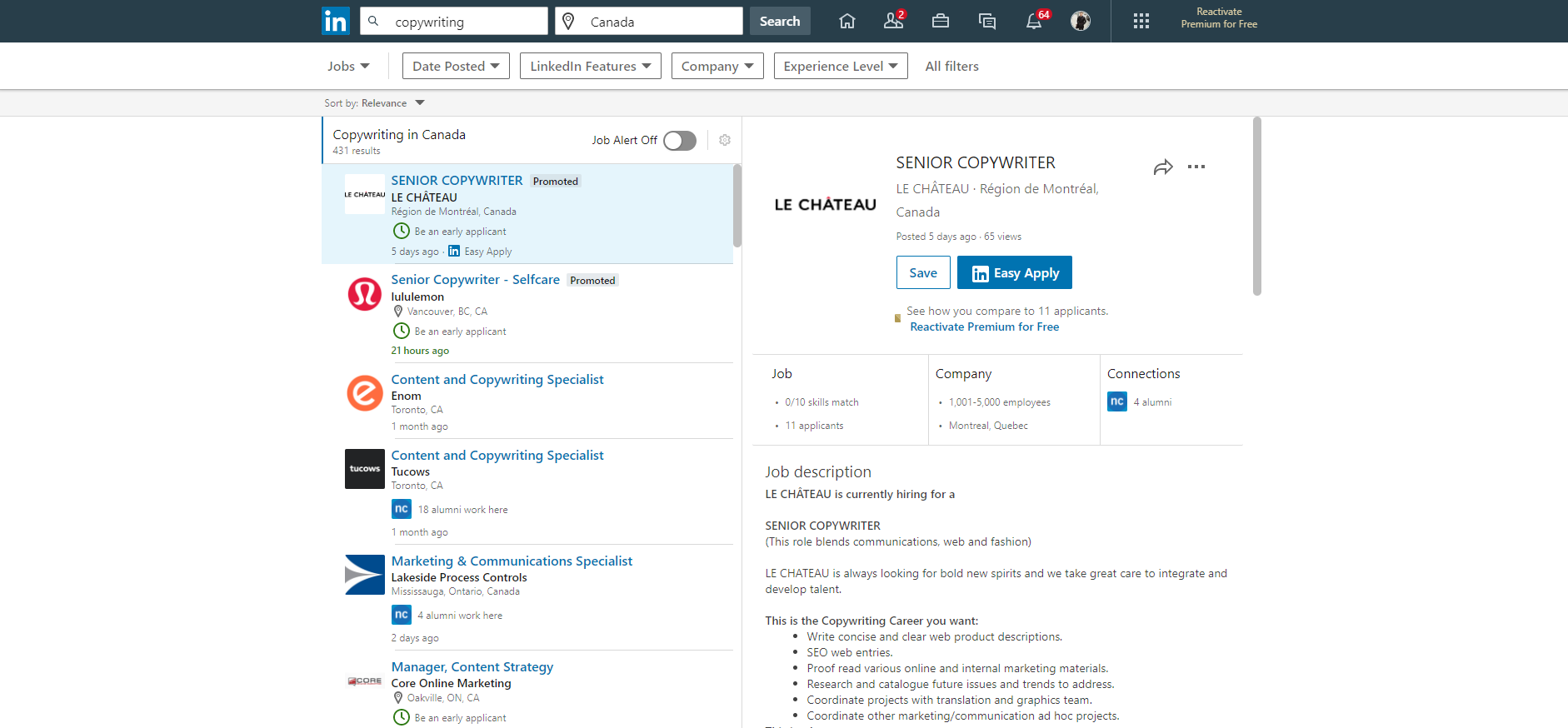
You can filter from the top menu by date posted, LinkedIn features, company, and experience level.
There are 431 potential copywriting positions you could apply for at the time of this article!
Click the blue “Easy Apply” button on any jobs that interest you.
You will be prompted to choose an email, phone number, and resume in a popup window.
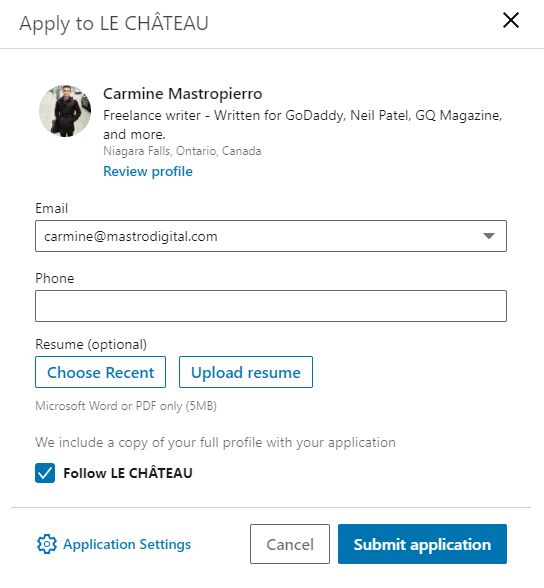
Click “Submit application” and kick back while you wait for them to give you a response.
5. Cold email businesses you’re interested in writing copy for
The best part about finding freelance copywriting jobs is that you’re in control.
That means if you want to scout out companies and pitch them, you can and you should.
I’ve been using cold email to land high paying clients and wrote a cold emailing guide that you need to read.
It will teach you all of the strategies and processes in-depth, but let’s look at it quickly.
Step 1: Find companies you’d like to write copy for
This is literally as simple as Googling industry keywords and organizing a spreadsheet of websites.
If you want to get more technical, I’d suggest using a platform like Crunchbase since they are a massive database.
It will save you heaps of time versus going through each page of Google.
Simply click the “Companies” tab from the sidebar and filter the results how you’d like.
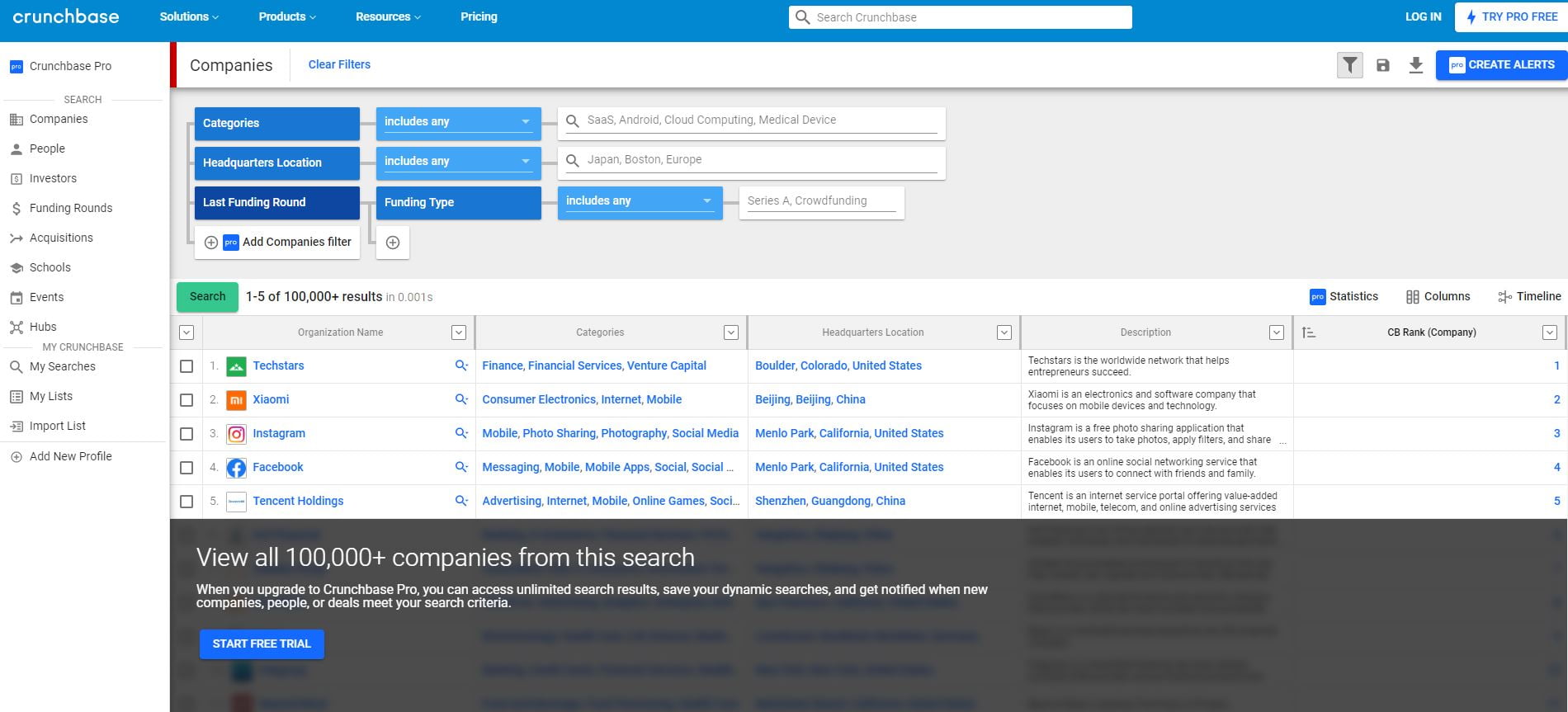
Granted the free version only offers five results at a time, you’ll still be able to narrow down exact businesses you want to work with.
Once you have a hitlist of websites, move onto the next step.
Step 2: Find the decision maker and their email
There is a specific person you need to speak within every company when you pitch them if you want your voice to be heard.
Otherwise, it will be lost in a stack of emails in an inbox never to be seen again.
This is why I always suggest you research into the company via LinkedIn to find the VP of Marketing, CMO, or other marketing executive.
Search the company in the top bar, click their profile, and select the “People” tab.
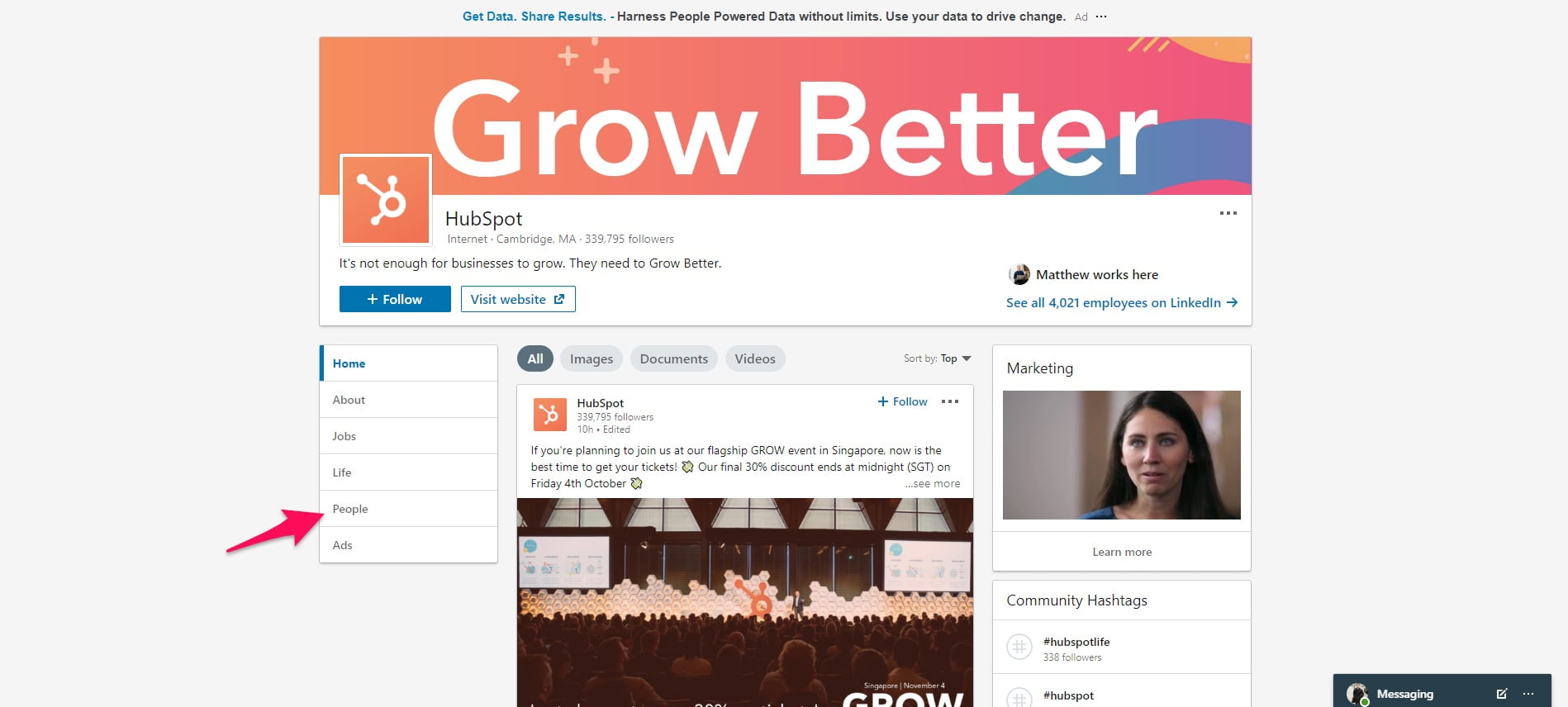
Scroll through the list of employees until you find an individual in charge of marketing, advertising, or content for the business.
Click their profile and the “Contact info” option afterward.
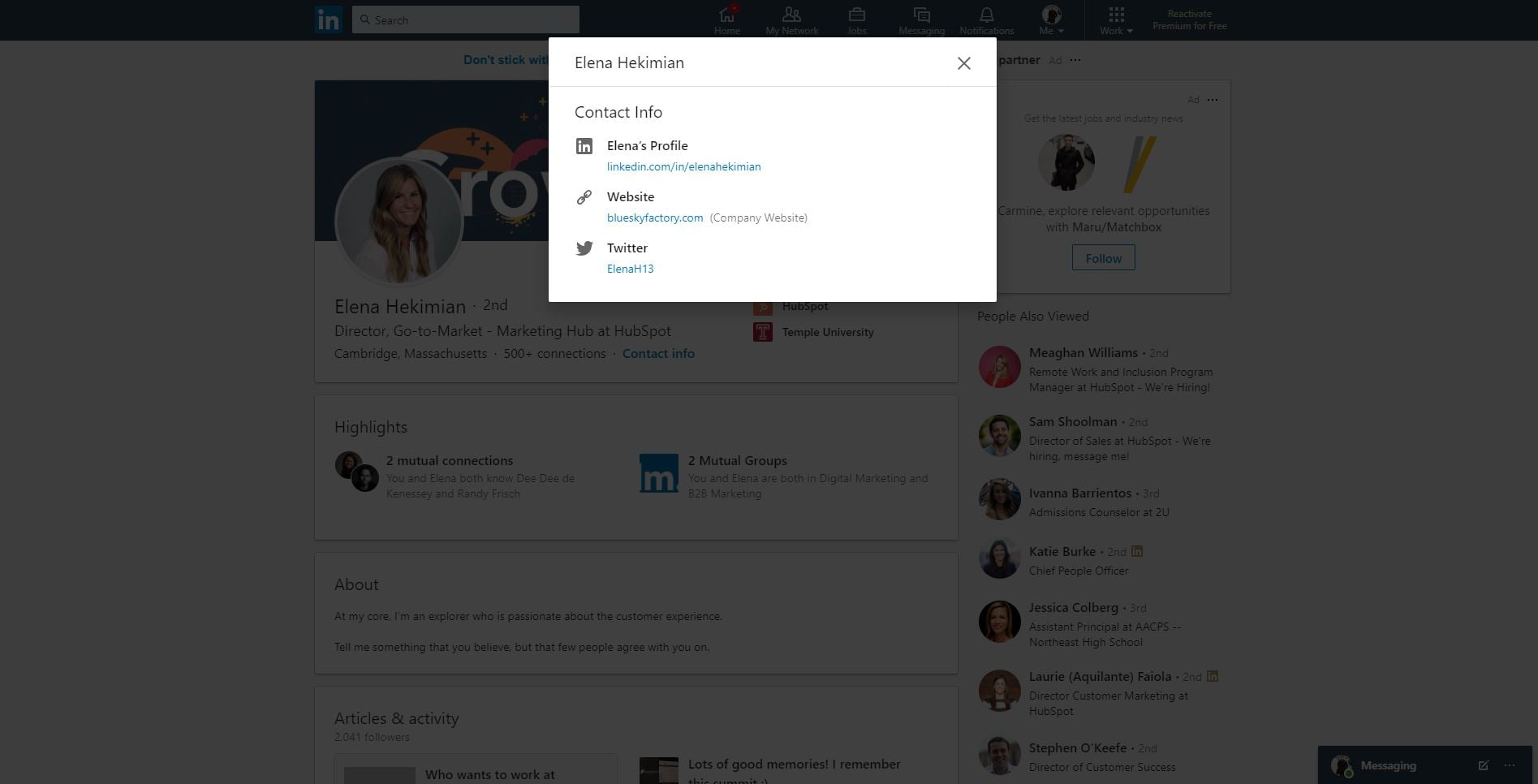
Sometimes their email will be listed on the popup, but if not, feel free to message them directly through LinkedIn, Twitter, or another network.
That brings me to my next point.
Step 3: Send a personalized pitch and don’t forget to follow up!
Alright, don’t mess this up. You’re at the last step.
Executives are busy people and get emails all day. You’ll need to stand out from the crowd by sending them a straight to the point and customized email.
Here’s a template I’ve used myself with great success. Don’t underestimate keeping things simple!
Hey {First name},
I found {Company name} through {Website} and really your latest blog post on {Topic}.
I’ve written for {Clients} and have helped generate {Results}. Does {Company name} need any help producing content or copy at the moment?
Warm regards,
{Your name}
Yep, it’s really that simple. Trust me when I say that executives will respect a short email that’s genuine.
Many times my clients have told me that I’m one of the only emails they’ve ever responded to because it wasn’t copy and pasted spam.
Take the time to find the right person in a specific company and you’ll be drowning in freelance copywriting clients 🙂
6. Attend conferences and networking events
I know, I know. Who wants to meet strangers?
It’s not the most exciting thing when you first begin and it can often be nerve racking, but physical networking is crucial for finding freelance copywriting jobs.
As a matter of fact, 5-20% of new customers are generated via tradeshows.
That means if you aren’t networking face to face, you could be missing out on heaps of clients and job opportunities.
I can tell you myself that attending conferences is amazing as a freelancer or agency.
I like to go to a few networking events every month, and I always meet very interesting people. As they say, your network is your net worth.
Not only that, but I’ve gotten plenty of copywriting work, too.
You never know who you might meet at these venues or who they may refer to you.
Sure, sometimes they’re not lucrative in a business sense but you always leave with new connections.
Here’s what you should do to maximize your chance of getting copywriting jobs from networking events.
Dress the part
Your first impression is everything.
If you show up in nice business attire that’s tailored to your body, people will interpret you more professionally.
Don’t be that guy in shorts, flip flops, and a Hawaiian shirt. Save that for when you’re on vacation.
Note that I said tailored. A lot of guys have suits that look like their two sizes too big for them.
All it takes is $100 and suddenly it looks your suit was handcrafted for your body. You’ll feel more confident and stand out from the crowd, both of which will translate into better networking capabilities.

However, make sure you dress for the occasion.
I once read an amazing book called The Charisma Myth(Definitely check it out) that touches on this exact idea.
It gave the example of a businessman who was about to have an extremely important dinner with a client.
He wore his finest wool suit to make a good impression but there was one crucial problem…
It was in the middle of the summer.
He ended up feeling very hot, itchy, and uncomfortable during the dinner. His client interpreted these behaviors as if the businessman was not enjoying himself or interested.
The business deal was ruined.
This is a great example of ensuring that you dress professionally but suitable for the weather at the same time.
Fear means you’re doing something new
Unless you’re naturally extroverted, you probably won’t enjoy walking up to strangers and introducing yourself.
Heck, I used to be the same way.
You get nervous, a bit awkward, and the longer you think about it the worse it gets.
I can walk up to any person in the snap of a finger, strike up a great conversation, and feel little to no angst. Do you know how?
Practice.
You’ll never get good at networking or rewire your brain to be more social unless you get out of your comfort zone.
And that’s exactly it: fear and anxiety is simply your brain saying you’re doing something new.
And if you’re doing something new, you’re developing yourself 🙂 That’s why you should start approaching fear and similar feelings as a good signal in these scenarios.
Follow up with people you meet
Everyone wants to be first to be second.
That means that few people want to be the first one to start a conversation or take action.
This is also why it’s crucial that you take initiative to follow up with those you meet at conferences.
I like to either add them on LinkedIn or shoot them a quick email.
Depending on how they respond, we may also meet up for coffee at a later date.
Following up allows you to stay on people’s radar while standing out from all of the other people they met.
Final thoughts on getting copywriting jobs
Copywriting is a very rewarding and fun career, especially when you can pursue it from the comfort of your own home.
A typical day of a copywriter involves writing copy, researching, editing, and working with other departments to manage campaigns.
Besides a base salary or hourly pay, copywriters can also receive profit share and bonuses for their performance.
The first place I’d suggest looking for remote copywriting jobs is regular job sites with the correct filters. Most will have freelance, contract, and remote options you can use to find appropriate positions.
Next, websites like Angel List can help you find writing careers in startups which also commonly offer equity.
I personally know people who purposely work in new startups every few years to build massive amounts of wealth purely through equity.
I’ve also recommended that writers create their own personal websites, too. It doesn’t have to be overly fancy or optimized.
WordPress, Wix, Weebly, and other website builder tools will have you up and running within a matter of minutes.
Create a portfolio, contact, about, and blog page to set the foundation.
Lastly, check out LinkedIn because they usually have hundreds of available copywriting jobs you can apply for.
And stop waiting around! Start using the tips I shared with you today to land the copywriting career of your dreams 🙂














